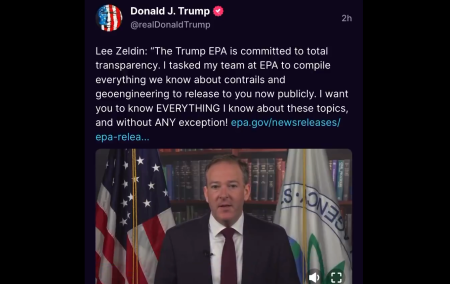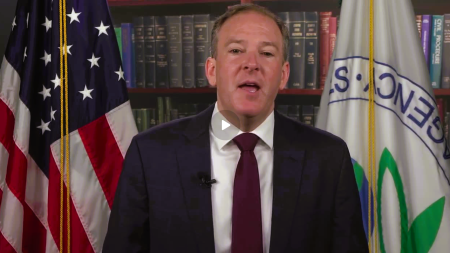BREAKING! TRUMP ADMINISTRATION’S OMB SHUTDOWN STRATEGY: PERMANENT CUTS, UNION CASUALTIES, AND THE RECONFIGURATION OF FEDERAL POWER — DEMOCRAT SHUTDOWN!
Ready to uncover the truth? Sick of the lies? Join our Telegram Channel now. It’s time for the real story! Stay informed! My gratitude to all my readers!
OMB shutdown strategy exposed — internal Russ Vought directives push agencies to convert an October Democratic budget lapse into permanent workforce reductions. Permanent cuts, union casualties, discretionary funding losses, and a wholesale reconfiguration of federal power.
DOSSIER: OPERATION “CUT TO THE CORE”
A classified‑style investigation of the institutional mechanics and political consequences of a shutdown turned permanent purge.
THE MOMENT — AN ADMINISTRATIVE WEAPON
The line between budget impasse and administrative revolution has been blurred. What may start as a conventional October shutdown — lawmakers trading demands, staff furloughs, and late‑night negotiations — is being recast, internally, as an instrument of structural change. According to directives circulating in agencies, the Office of Management and Budget has asked departments to lay out permanent elimination plans for positions supported by discretionary appropriations the moment funding lapses and no alternative funding is available.
This is not mere contingency planning. It is the tactical use of a funding lapse as a legal and operational mechanism to accelerate government reconfiguration. The memorandum underlines a cold arithmetic: where federal authorizations end, the administrative footprint may shrink — not temporarily, but permanently.
RUSS VOUGHT: ARCHITECT OR EXECUTOR?
At the center is the OMB Director, functioning as the executioner of bureaucratic realignment. The directive is surgical in tone: agencies must identify programs that will cease to receive discretionary funds and list positions that can be eliminated when funding ends. The calculus is blunt: positions not aligned with current presidential priorities are on notice.
In practice, that means entire lines of work — research teams, grant coordinators, compliance officers, outreach units — that historically survived through political protection or entrenched budget allocations may now be vulnerable to extinction. The directive hands agency leadership a checklist and a clock.
WHAT IS THE OMB — AND WHY IT’S THE WHITE HOUSE’S SECRET WEAPON
(OFFICE OF MANAGEMENT AND BUDGET — THE EXECUTIVE’S SHARP KNIFE)
In the bureaucratic jungle of Washington D.C., few agencies cut deeper — or quieter — than the OMB: Office of Management and Budget. Officially, it’s the office that “helps the President prepare the federal budget.”
Unofficially? It’s the scalpel a real President can use to reshape the entire federal government.
WHAT THE OMB ACTUALLY DOES:
Writes the President’s budget: Every dollar the federal government spends starts at the OMB. If a program gets killed or a department goes broke — it began in a paragraph drafted here.
Controls every agency: OMB can block funding, demand reports, reject plans. No agency — not even the DOJ, EPA, or NIH — escapes its oversight.
Approves every regulation: Before any rule becomes official law, the OMB signs off on it. If it doesn’t fit the President’s priorities, it dies at the desk.
Executes the President’s agenda: Want to shrink the state? Cut ideological programs? Starve unaccountable bureaucracy? OMB is the tool.
WHY OMB IS DEADLY UNDER TRUMP
Under past administrations, OMB was just a bureaucratic formality. Under Trump, it’s a precision weapon. And Russ Vought, the current Director, is the right man to wield it:
Quiet. Methodical. Unshakable. No grandstanding. No applause. He executes.
Under Trump’s orders, the OMB has become what it was always meant to be: an instrument of administrative warfare.
⚠️ WHO SHOULD FEAR THE OMB?
Federal unions bloated with entitlement and guaranteed returns
Progressive agencies built on discretionary lifelines
Democrat pet projects that produce nothing but reports and press releases
Career bureaucrats who survived not through merit but through political insulation
If your position doesn’t serve the President’s vision — it’s on borrowed time.
THE OMB ISN’T AN OFFICE. IT’S A BLADE.
And Trump knows how to use it. The October shutdown isn’t a crisis — it’s a window of opportunity. And the OMB is the silent machinery behind the coming purge.
FROM FURLOUGHS TO FATALITY: THE UNION DIMENSION
For decades, shutdowns ended with backpay, reputational sparring, and renewed appropriations. Federal unions learned this rhythm. They negotiated, they litigated, they rallied — and the personnel returned. This time the script is different.
If agencies remove positions permanently when discretionary funding lapses, the result is not a weekend interruption but a labor market bloodletting. Union members who counted on the procedural safety net — recall rights, backpay, incremental re‑appointment — could find themselves displaced permanently. Collective bargaining rights will be tested in new, unforgiving terrain: legal challenges, public campaigns, and strategic lockouts of programs deemed “non‑essential” by the executive.
POLICY SCRAPINGS: WHO WALKS, WHO STAYS
The directive forces a policy prioritization: what survives must demonstrably align with presidential objectives. Programs historically supported by Democratic priorities — climate projects, certain regulatory offices, grant programs directed to civil society and research — may be deprioritized in the agency inventories. Conversely, national security, border enforcement, and select industrial strategies could be preserved or enhanced.
This is more than staffing cuts. It’s a blueprint for ideological triage. The administrative map of Washington will be redrawn along policy fault lines, with tangible consequences for delivery of services, regulatory oversight, research continuity, and long‑term program viability.
THE BIG COVER-UP: Scientists Unravel the Concealed Root of BPH Affecting Millions of Men — The Truth They’ve Buried for Decades
LEGAL AND CONSTITUTIONAL FRICTION
The legal environment will be messy and litigated. Agencies are constrained by statute; not every position paid from discretionary funds can simply be erased without legal argument. The Posse Comitatus line will not be invoked here, but labor law, statutory program obligations, and appropriation riders create avenues for court fights.
Expect rapid test cases in district courts over personnel rights, the scope of agency discretion during funding lapses, and interpretation of appropriations law. The outcomes will shape whether the OMB’s directive is an operational reality or a contested, time‑consuming gambit.
POLITICAL SECOND‑ORDER EFFECTS: THE NARRATIVE WAR
A strategic purge inflicts political costs on everyone. Opponents will brand it cruel and reckless; allies will brand it decisive. The real battleground will be narrative. Media cycles will be weaponized. Unions will mobilize members; conservative outlets will frame cuts as liberation from jumbo bureaucracies.
The playbook of blame and counter‑blame is old, but the stakes are now structural: either short‑term spectacle with backpay, or a step change that permanently reduces government capacity in selected areas.
HUMAN TOLL: COMMUNITIES AND EXPERTISE LOST
Beyond politics, the human calculus is stark. Eliminating positions destroys institutional memory. Programs that coordinate grants, supervise compliance, or manage scientific datasets will suffer from fractured continuity. Rural and urban communities that depend on federal grants could lose vital partners. Expertise, once dispersed, is not easily recreated. For every eliminated position, the government risks losing a thousand tacit know‑how hours — the kind that only long‑service professionals possess.
SCENARIOS AND PROBABILITIES
Containment and Rollback (Moderate probability): Courts and Congress force piecemeal restoration; backpay and reinstatements follow; the purge is partial.
Partial Purge with Legal Attrition (High probability): Some positions eliminated, others preserved after litigation; the administrative footprint shrinks unevenly.
Broad Structural Realignment (Low‑to‑Moderate probability): A sweeping reconfiguration proceeds where large program lines are defunded and permanently dismantled, reshaping federal capacity for years.
CONCLUSION — A TURNING POINT IN ADMINISTRATIVE GOVERNANCE
What is being proposed is a procedural innovation dressed as budgeting contingency: converting normal shutdown mathematics into a lever for permanent institutional change. Whether framed as necessary pruning or punitive retribution, the result — if executed — will echo for a generation: fewer roles in federal service, altered policy priorities, and an emboldened executive who used a funding lapse to push through structural change.
This dossier does not cheer or condemn — it reads the memo, tracks the players, and lays out the consequences. The political and legal fights will determine whether America’s administrative footprint shrinks as planned, or whether the reverberations produce a constitutional check that stops a purge in its tracks.






![BREAKING: Leaked Pentagon Report from 2003 CONFIRMS Trump’s Plan to Take Canada & Greenland Was NEVER About Politics — It Was About SURVIVAL | [VIDEO + Documents]](https://amg-news.com/wp-content/uploads/2025/09/Leaked-Pentagon-Report-from-2003-CONFIRMS-Trumps-Plan-to-Take-Canada-Greenland-450x253.jpg)
![OPERATION SKYWATCH IGNITED: Trump & Rfk Jr. Launch Global Crackdown On Chemtrails | Arrests Imminent — THIS IS NUREMBERG 2.0, AND IT’S HAPPENING NOW [VIDEO]](https://amg-news.com/wp-content/uploads/2025/04/BOOM-OPERATION-SKYWATCH-IGNITED-450x252.jpg)



1 Comment
You got to love it. Demonrats laid their heads on the chopping block and dared Trump to take a swing.
Reminds me of Ber Rabbit getting tossed back into the briar patch to punish him. They gave President Trump a gift without thinking things through.
As Q says, “These people are stupid”.